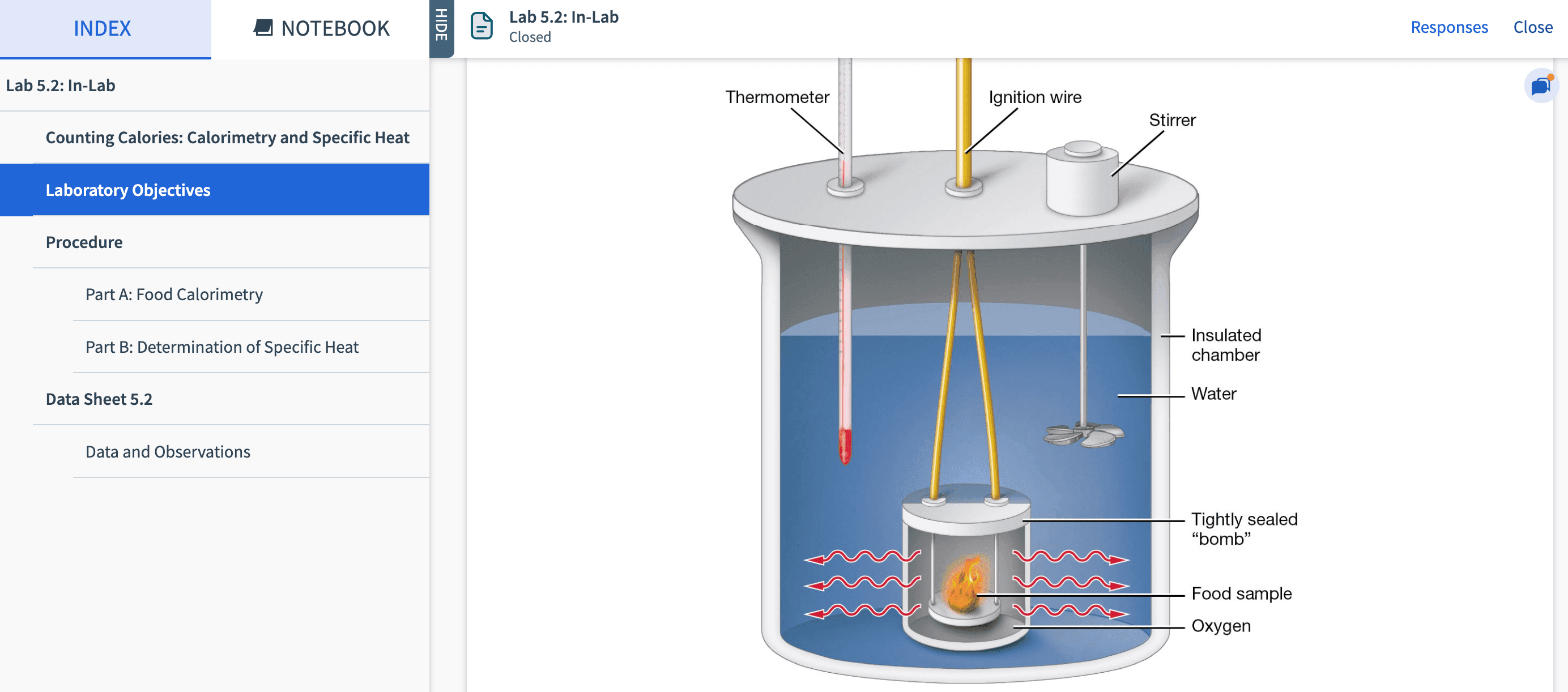Exercises for the General, Organic, & Biochemistry Lab, 2e
William G. O'Neal
This full-color lab manual is intended for a one-semester General, Organic, and Biochemistry course or Introductory Chemistry course. It features procedures written with the goal of simplifying a challenging subject by applying tricky concepts to everyday life. Students will love learning from the wealth of photographs and figures that illustrate the key concepts and critical lab setups.

Top Hat Interactive eText
requires a join code from instructor
$59.00USD
all prices represent net price, not including 3rd party markups
Hybrid
requires a join code from instructor
$69.00USD
all prices represent net price, not including 3rd party markups
ISBN: 9781640430440
does not require a join code
$80.00USD
all prices represent net price, not including 3rd party markups

Table of Contents for Exercises for the General, Organic, & Biochemistry Lab, 2e
- Front Matter
- Lab 1: Think Like a Chemist
- Lab 2: Laboratory Measurements and Units
- Lab 3: Density and Measurement Precision
- Lab 4: Chemical and Physical Properties
- Lab 5: Calorimetry and Specific Heat
- Lab 6: Elements and the Periodic Table
- Lab 7: Nutritional Minerals in Cereal
- Lab 8: Ionic and Covalent Bonding Patterns
- Lab 9: Formula of a Compound
- Lab 10: Verification of Reaction Stoichiometry
- Lab 11: Synthesis of Aspirin
- Lab 12: Hydrocarbon Isomerism and Bond Reactivity
- Lab 13: Structures of Carbohydrates

Key features
- Initiates the study of basic concepts through concise introductory material and pre-lab questions that familiarize students with the concepts presented in each exercise
- Students investigate the mysteries of matter by following the clearly written procedures and recording data and observations on the provided data sheets
- Safety notes, OSHA pictograms, and Technique Tip boxes help students develop skills in laboratory technique while safely working through procedures
- Critical thinking questions assist students in making connections between what they have learned in lab and how this knowledge can be applied to their studies